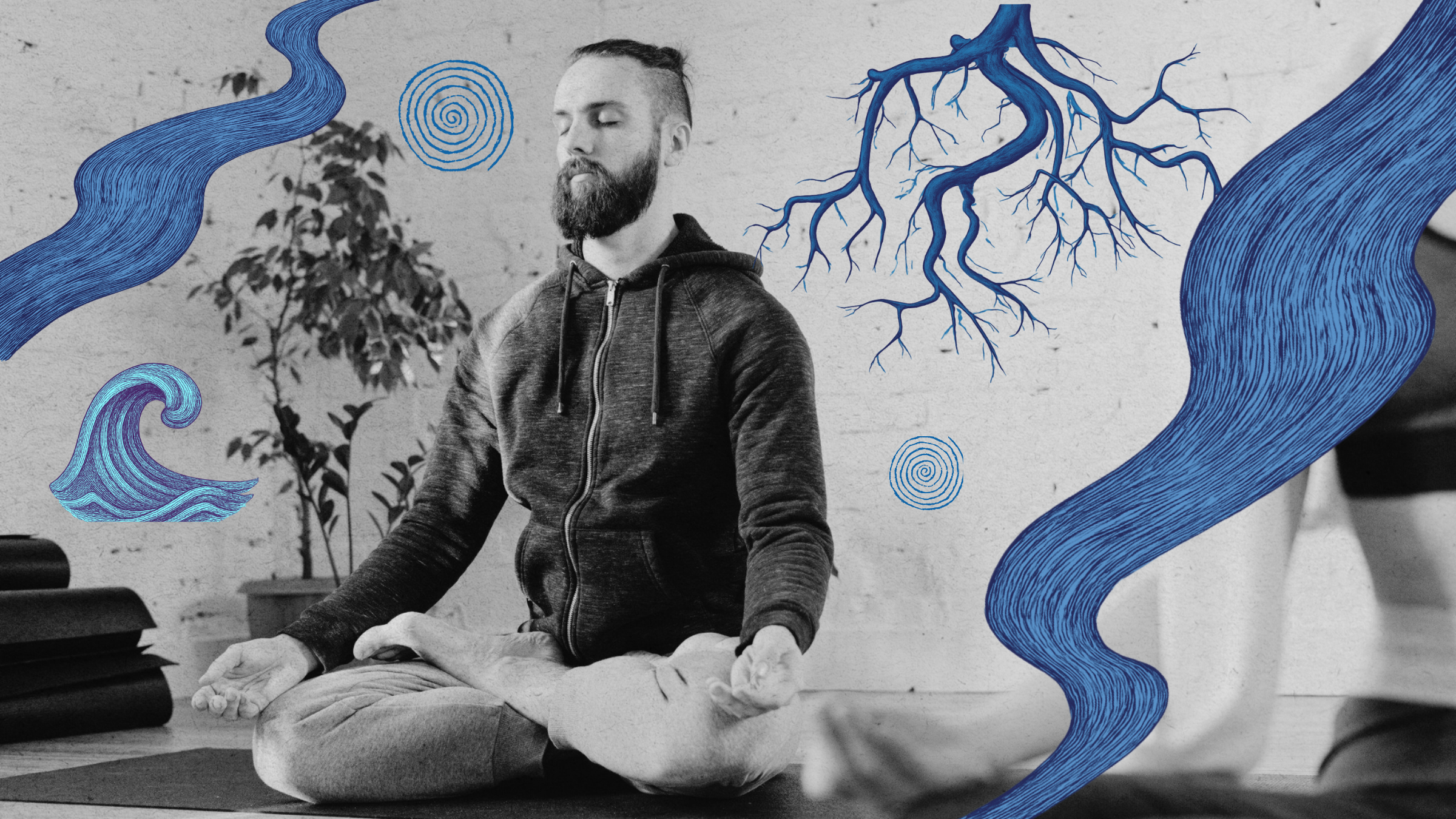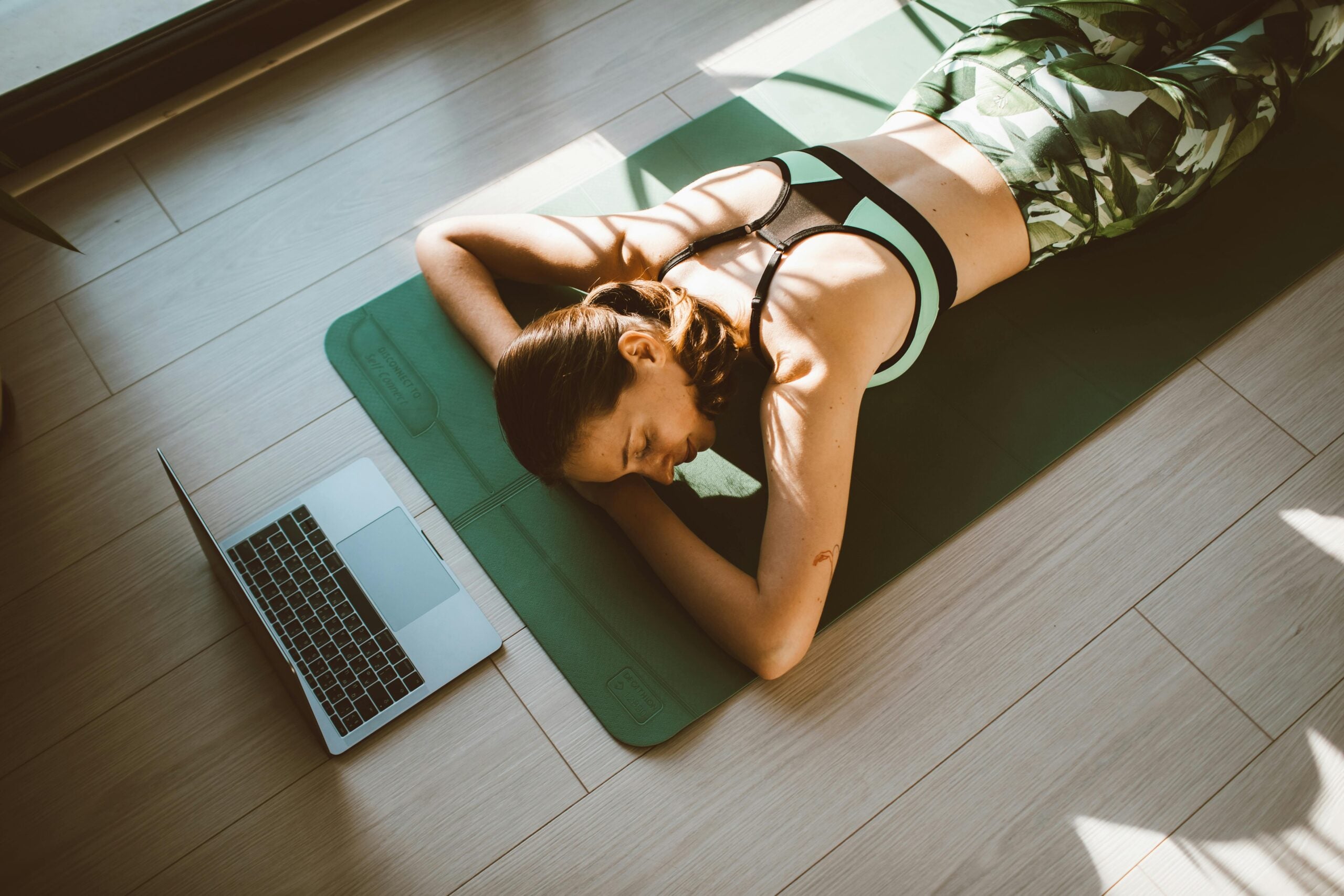If you live with ADHD, you’ve probably experienced a constant hum of mental activity—racing thoughts, shifting focus, and bursts of restless energy. One of the proven ways to ease ADHD symptoms is through physical activity. Yoga might seem too boring or slow for an ADHD mind.
Disclosure: This post may contain affiliate links. If a purchase is made through these links, we may earn a commission at no extra cost to you. Your kind support helps us create more mindful articles!
But yoga is diverse, with many practices that deepen awareness and help balance and manage energy. Modern research has shown yoga’s combination of movement, mindful breathing, and mental focus to be a great help for easing ADHD symptoms such as impulsivity, distraction, and emotional overwhelm.
What Is ADHD
ADHD (Attention-Deficit/Hyperactivity Disorder) is a highly prevalent neurodevelopmental condition affecting attention, executive function, decision-making, and impulsivity. Nearly 4.4% of adults who completed online or diagnostic ADHD tests showed positive results. Men are more likely to be diagnosed with this neurodevelopmental condition [1]. We still don’t know whether gender differences are due to men’s higher predisposition to ADHD or underdiagnosis among women.
Despite being the most studied neurodevelopmental condition, ADHD’s still somewhat mysterious. Here’s what we do know about ADHD
- ADHD is highly heritable, with genetic factors accounting for approximately 60-75% of the risk [2].
- ADHD is associated with abnormalities in brain structure and function, which regulate executive functions. It means that the brain of a person with ADHD may be less active (ironically) or have less volume.
- The disrupted transmission of dopamine leads to deficient motivation, impaired reward processing, inattention, and compromised behavioral regulation. That’s why ADHDers can procrastinate, have trouble with state switching, and be prone to addictions.
- Social and parenting factors may exacerbate symptoms, but are not considered direct causes.
- Though considered a “child’s” disorder, ADHD doesn’t disappear in adulthood. Adults just learn to mask symptoms, internalize attention/impulsivity problems, and adopt (un)healthy coping strategies.
While only a licensed professional can diagnose ADHD, a quick online ADHD test can help you identify common symptoms and patterns you may want to discuss with your doctor or therapist. Understanding your results can make the following information about yoga and ADHD even more relevant.
How Yoga Can Help with ADHD Symptoms
It Improves Concentration
 Yoga is more than physical movement. Yoga is a deliberate practice of paying attention. Each pose requires focus on balance, posture, and breath. So, every pose becomes a mini meditation, teaching your brain to return to the moment instead of chasing distractions.
Yoga is more than physical movement. Yoga is a deliberate practice of paying attention. Each pose requires focus on balance, posture, and breath. So, every pose becomes a mini meditation, teaching your brain to return to the moment instead of chasing distractions.
In 2016, a study on elementary students diagnosed with ADHD showed that yoga significantly increases concentration through both physical activity and “teaching” children’s brains how to focus. The kids had a school-based yoga intervention, “The Yoga Fitness for Kids.” By the end of the experiment, kids showed significant improvements in their ability to focus on a specific task [3].
If elementary school kids were able to achieve such results with minimal interventions, adults who mindfully choose and follow their yoga habits have the potential to make a significant difference in their daily functioning.
It Helps with Regulating Emotions
For people with ADHD, emotions are powerful and unpredictable. Some associate this emotionality with neurodevelopmental differences, others with Adverse Childhood Experiences (ACEs). People with ADHD are even predisposed to Rejection Sensitive Dysphoria (RSD), sensitivity even to the slightest criticism.
Yoga introduces mindfulness that helps calm the amygdala, the brain’s emotional center, which is often overactive in ADHD. Slow, conscious breathing activates the parasympathetic nervous system (responsible for rest), reducing frustration and impulsivity.
In real life, this translates into emotional regulation. Yoga teaches pause before reaction, a skill people with ADHD usually don’t have. With time, a person learns to recognize their triggers and respond more calmly.
It Decreases Restlessness
One of the most challenging symptoms of ADHD is constant restlessness. The urge to move, fidget, escape stillness, bite nails, do things right now. Exactly because of this symptom, there is a myth that people with ADHD can’t do yoga.
However, there are different types of yoga. For example, dynamic yoga styles like Vinyasa or Power Yoga provide a healthy outlet for ADHD energy. Physical movement in yoga stimulates dopamine, the “problematic” neurotransmitter that supports motivation and focus. A study on children with comorbid ADHD and OCD found that a combination of yoga and music interventions significantly decreased their irritability and hyperactivity [4].
Unlike popular belief, yoga doesn’t suppress energy. It helps transform it into focus, giving the mind the balance it naturally seeks.
Mechanisms How Yoga Alleviates ADHD Symptoms
Yoga helps with ADHD not only through relaxation but also by influencing key neurological and physiological systems. Here’s how each mechanism works:
- Breathwork. Controlled breathing activates the vagus nerve, which lowers heart rate and reduces the body’s stress response. For someone with ADHD, this can mean fewer overstimulating, anxious moments and more time/space to think clearly.
- Mindfulness. Practicing presence in yoga increases gray matter density, which can be smaller in people with ADHD. This neurodevelopmental uniqueness is tied to attention, emotion regulation, and self-control. More mindfulness = fewer and less intense ADHD symptoms.
- Regulating brain chemistry. Movement and breath naturally boost dopamine and serotonin, neurotransmitters that support motivation, learning, and mood stability.
- Self-awareness. As you hold poses and observe your thoughts, you start recognizing triggers that lead to distraction, restlessness, or anxiety. This awareness makes it easier to notice early signs of overwhelm and take proactive steps to refocus.
- Relaxation. A well-known fact is that yoga is just nice to feel. Because of its stress-reducing effects, it promotes better sleep and decreases irritability. Both are crucial for daily functioning, not only for individuals with ADHD symptoms.
- Physical activity. Yoga enhances executive functioning, like task-switching, working memory, and emotional regulation. The release of endorphins after movement helps sustain motivation and improves overall well-being.
How to Use Yoga to Help with ADHD: Tips & Exercises
Starting yoga with ADHD doesn’t require perfection. Start with simply starting. Here’s how you can do it:
- Begin with active forms like Vinyasa or Power Yoga before progressing to slower, mindfulness-based practices. These dynamic sequences help release excess energy first, making it easier to pave the way to deeper and professional poses.
- Suggested poses. Try the Cobra, Cat–Cow, and Downward-Facing Dog poses. These movements strengthen the spine and open the chest for deeper breathing.
- Teacher choice. If possible, seek out ADHD-trained or trauma-informed instructors. They understand attention variability and sensory sensitivities, creating specialized environments.
- Self-practice. Can’t attend a class? Search for “yoga for ADHD” tutorials on YouTube or follow short guided sessions on meditation apps. Just 10–15 minutes a day really makes a meaningful difference.
- Keep showing up. It won’t always be easy. And especially in the beginning, it may feel boring. Other days, you may feel on top of the world. Progress is not linear. Even short daily practice strengthens patience over time. In yoga, as in ADHD management, consistency matters far more than perfection.
- Combine yoga with other ADHD interventions. Try combining yoga with ADHD medication, music interventions, having a digital calendar, etc. While medication, for example, supports chemical balance and therapy addresses behavioral patterns, yoga complements both by teaching mindfulness, body awareness, and emotional grounding.






